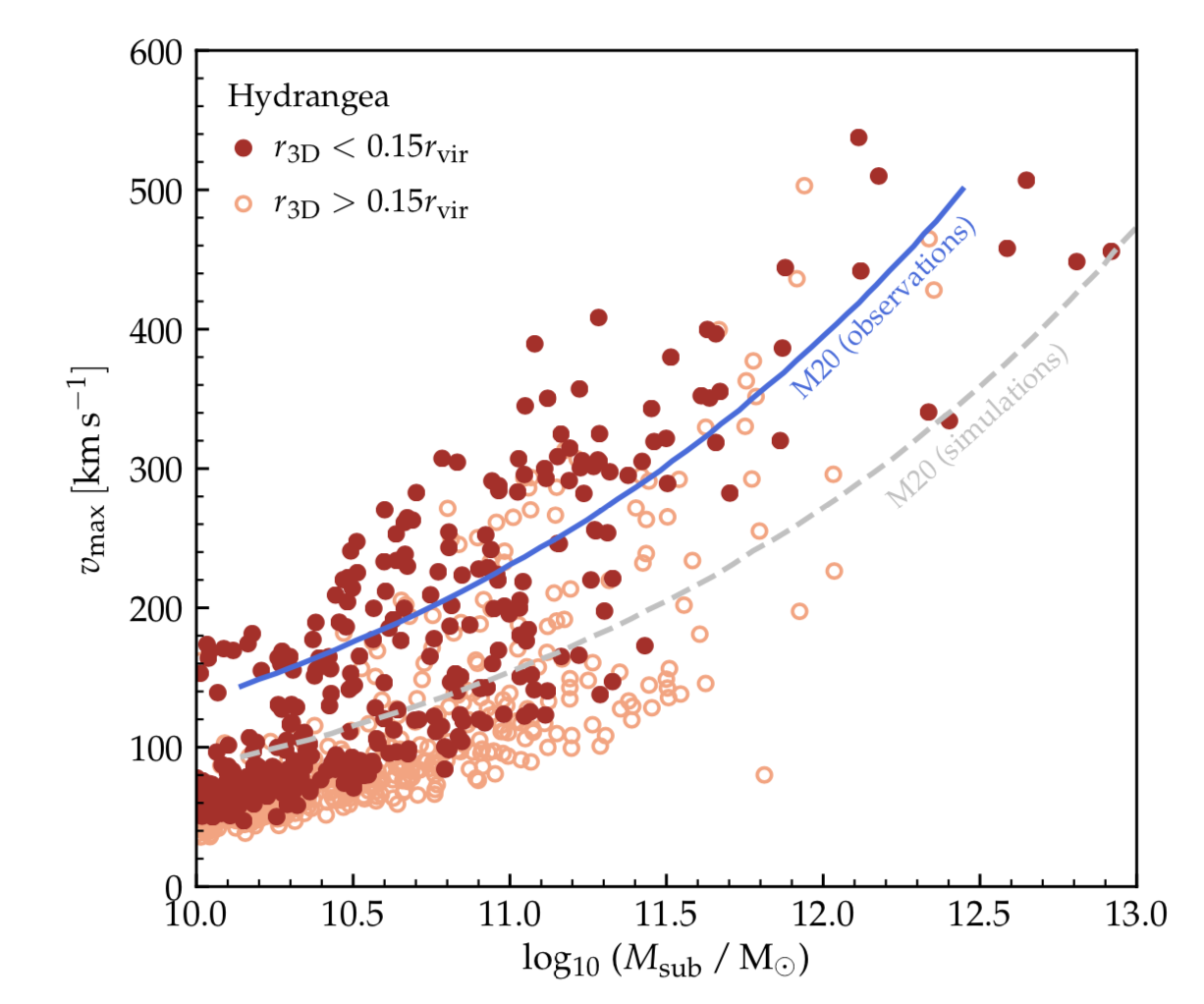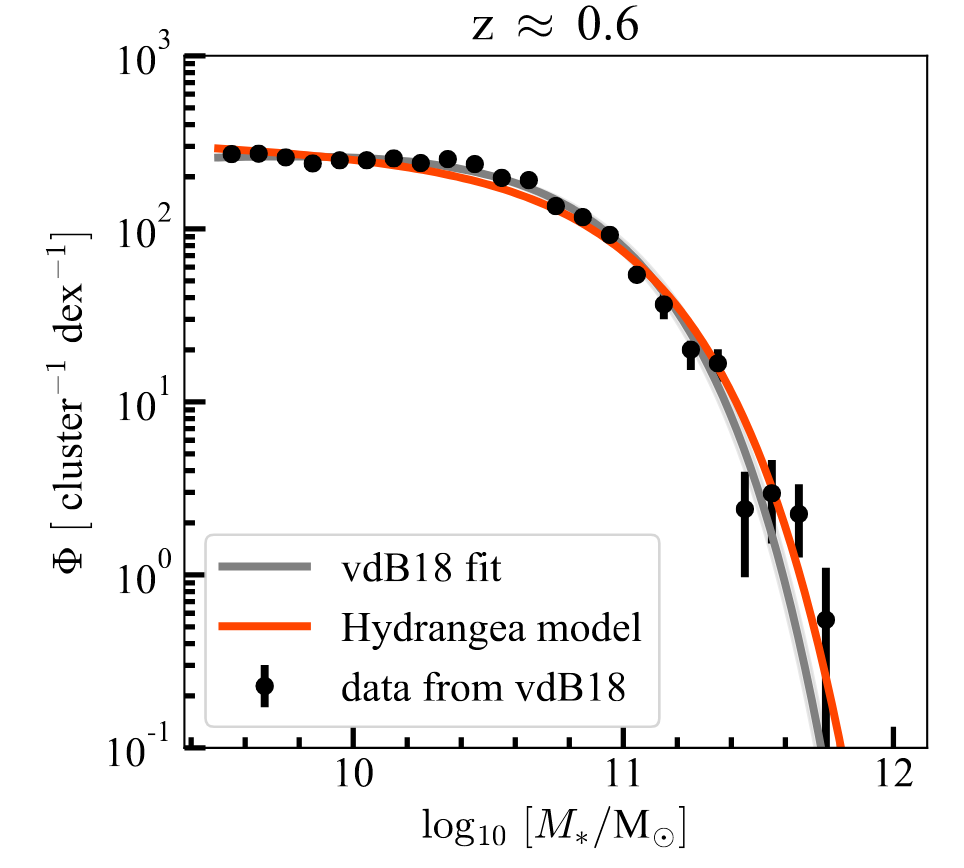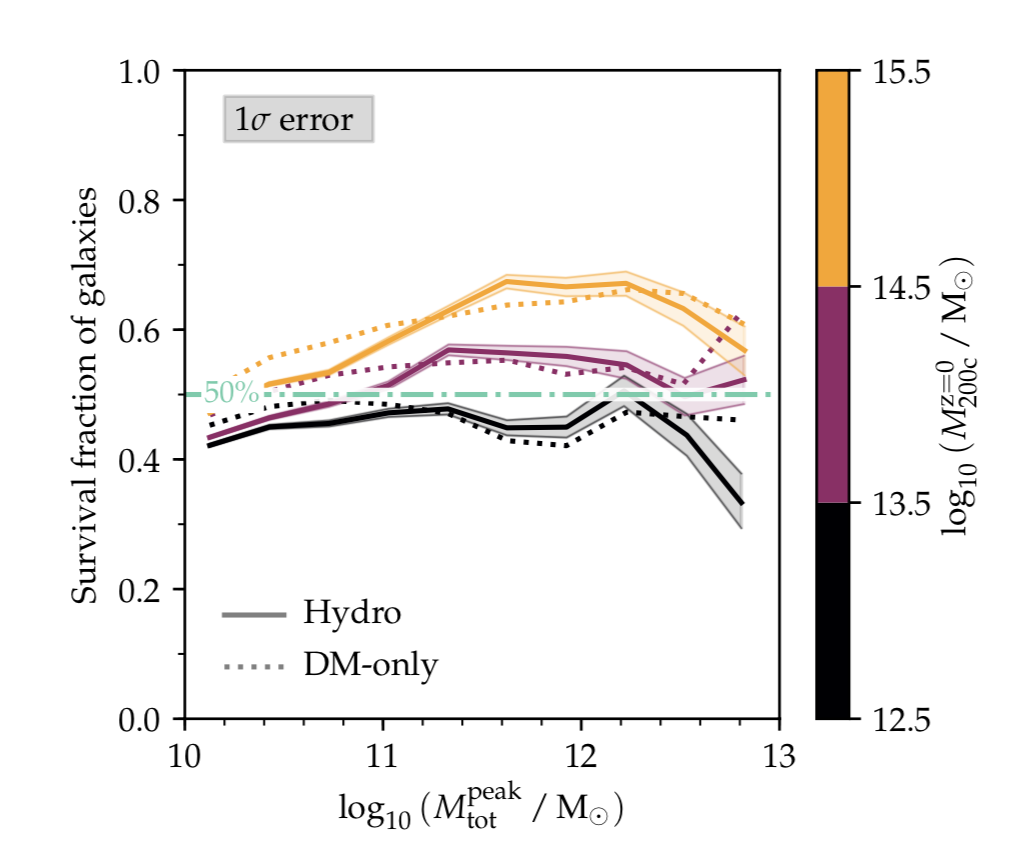Papers and data
Here you can find details of recent papers by myself and my students, including the data plotted in (some of) their figures.

Strongly lensed cluster substructures are not in tension with ΛCDM
Yannick M. Bahé (2021, arXiv:2101.12112)
Do simulations based on the standard ΛCDM framework make accurate predictions about the substructures of galaxy clusters, i.e. the mass in and around satellite galaxies? Recent work has suggested that there might be a significant tension, but in this short paper I show that the Hydrangea simulations predict subhalo masses and maximum circular velocities that agree well with what is observed. This supports the assumption that ΛCDM describes our Universe accurately, at least as far as current simulations can tell.
Plot data
Hydrangea subhalo properties (Cantor) [Figs. 1–4]
Hydrangea subhalo properties (Subfind) [Figs. 3 and 4]
Hydrangea DM-only subhalo properties [Fig. 3]
Illustris-TNG300 subhalo properties [Fig. 4] — see the TNG website for full data access

The stellar mass function and evolution of the density profile of galaxy clusters from the Hydrangea simulations at 0 < z < 1.5
Syeda Lammim Ahad, Yannick M. Bahé, Henk Hoekstra, et al. (2021, arXiv:2010.16195)
In this paper, led by my PhD student Lammim Ahad, we test the galaxy stellar mass function (GSMF) and radial galaxy distribution in clusters predicted by the Hydrangea simulations out to redshift 1.5. The massive end of the GSMF agrees very well with the observations over the entire redshift range, but low-mass galaxies are overpredicted by up to a factor of 3 at z >= 1. In contrast, the concentration of the satellite galaxy halo matches observations very well at high redshift, is a factor of ~2 too high in the local Universe. Precisely what is the origin of either discrepancy is currently unclear.

Disruption of satellite galaxies in simulated groups and clusters: the roles of accretion time, baryons, and pre-processing
Yannick M. Bahé, Joop Schaye, David J. Barnes, et al. (2019, MNRAS, 485, 2287)
How many galaxies survive being accreted by a galaxy cluster? We answer this question with the Hydrangea simulations, tracking all galaxies that have ever been accreted by the simulated clusters or their progenitors. Around half of them are still found at z = 0, and perhaps surprisingly this fraction is higher in more massive clusters. Most of the disruption actually happens during pre-processing in lower-mass galaxy groups, whereas galaxies accreted directly onto clusters at z ≲ 1 survive almost uniformly. At fixed galaxy mass, there is little difference between the properties of disrupted and surviving galaxies.
Plot data (coming soon)
Pre-processed galaxy fractions [Fig. 3]
Fractions of galaxies surviving to z = 0 [Fig. 4]
Survival fraction vs. accretion time [Fig. 11]